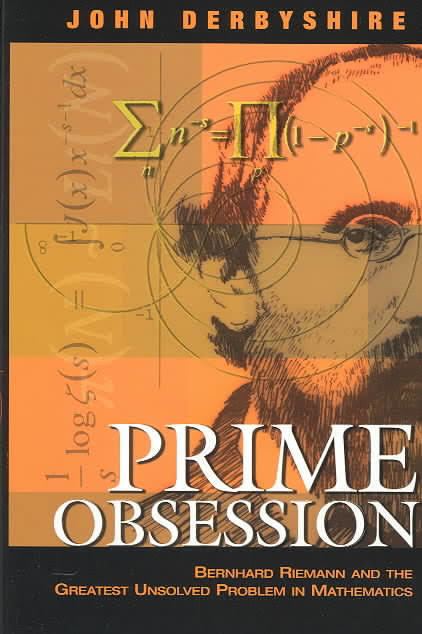8.2 /10 1 Votes8.2
Country United States Publisher Joseph Henry Press Pages 442 Originally published 2003 Page count 442 | 4.1/5 Goodreads Language English Publication date 2003 ISBN 0-309-08549-7 | |||||||||||||||||||||||||||||||||
 | ||||||||||||||||||||||||||||||||||
Similar John Derbyshire books, Number theory books, Mathematics books | ||||||||||||||||||||||||||||||||||
Prime Obsession: Bernhard Riemann and the Greatest Unsolved Problem in Mathematics (2003) is a historical book on mathematics by John Derbyshire, detailing the history of the Riemann hypothesis, named for Bernhard Riemann, and some of its applications. The book is written such that even-numbered chapters present historical elements related to the development of the conjecture, and odd-numbered chapters deal with the mathematical and technical aspects. Despite the title, the book provides biographical information on many iconic mathematicians including Euler, Gauss, and Lagrange.
Overview
In chapter 1, "Card Trick", Derbyshire introduces the idea of an infinite series and the ideas of convergence and divergence of these series. He imagines that there is a deck of cards stacked neatly together, and that one pulls off the top card so that it overhangs from the deck. Explaining that it can overhang only as far as the center of gravity allows, the card is pulled so that exactly half of it is overhanging. Then, without moving the top card, he slides the second card so that it is overhanging too at equilibrium. As he does this more and more, the fractional amount of overhanging cards as they accumulate becomes less and less. He explores various types of series such as the harmonic series.
In chapter 2, Bernhard Riemann is introduced and a brief historical account of Eastern Europe in the 18th Century is discussed.
In chapter 3, the Prime Number Theorem (PNT) is introduced. The function which mathematicians use to describe the number of primes in N numbers, π(N), is shown to behave in a logarithmic manner, as so:
where log is the natural logarithm. In chapter 5, the Riemann Zeta Function is introduced:
In chapter 4, Derbyshire gives a short biographical history of Carl Friedrich Gauss and Leonard Euler, setting up their involvement in the Prime Number Theorem.
In chapter 7, the sieve of Eratosthenes is shown to be able to be simulated using the Zeta function. With this, the following statement which becomes the pillar stone of the book is asserted:
Following the derivation of this finding, the book delves into how this is manipulated to expose the PNT's nature.
The book was awarded the Mathematical Association of America's inaugural Euler Book Prize in 2007.
